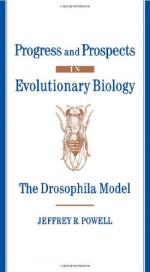|
This section contains 699 words (approx. 3 pages at 300 words per page) |

|
The common fruit fly Drosophila melanogaster is a human commensal typically seen hovering around garbage cans or the bananas in kitchen fruit bowls. These small flies have been model organisms for genetic studies since about 1910. The reason these flies have been so useful to biologists is because they are small and thus take up little lab space, they are easily cultured, they have a short generation time, and they are extremely fertile.
In 1910 Thomas Hunt Morgan of Columbia University in New York City discovered a white-eyed mutant in Drosophila melanogaster which differed from the standard red-eyed fruit fly. Mutations such as this allow geneticists to narrow down the chromosomal location of the gene or genes responsible for a particular phenotype, such as eye color. Since then thousands of other mutations in Drosophila have been identified and mapped, including mutations that alter behavior and learning. At the genetic level...
|
This section contains 699 words (approx. 3 pages at 300 words per page) |

|


